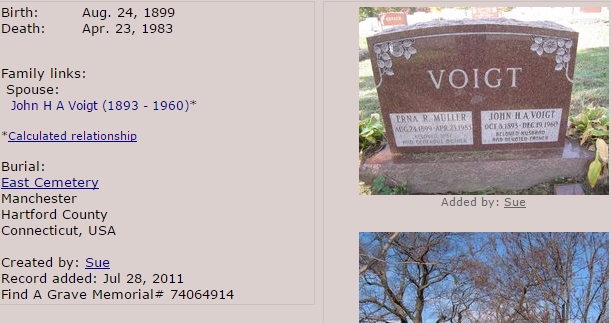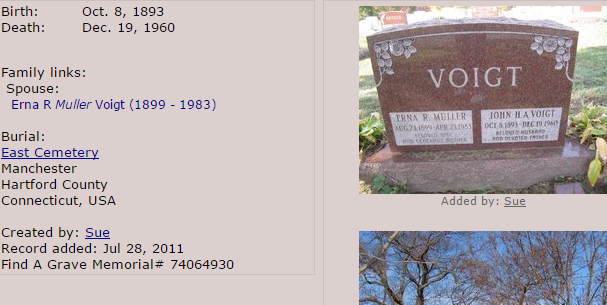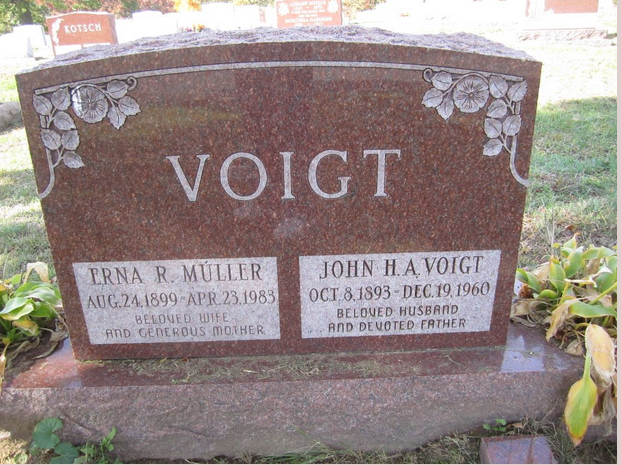This is the first week - so we are going to start with an easy one. Many of us use Find A Grave when searching for information about our ancestors. It is a great resource and it's free. But like many sites that cater to the research needs of genealogists, this one does not have an automatic citation generator. More on that topic another Saturday.
There are lots of "expert sources" on citations. And you can knock yourself out trying to conform to each and every nuance of the style you choose. I have added a citation reference guide to the documents available on the "Resources" page of the blog entitled, "Geneaology Source Citations Quick Reference Guide" that will give you a quick and easy-to-understand guide to citing sources.
But the sole purpose of a citation is to create a path for someone else to find the exact same source you found. So the more information you give, the better. Why do it at all? Because without citations and evidence evaluation, all your hard work is just a lot of scribble on a piece of paper. If the information is valid, then give it credence by citing the source and give any doubting Thomases who want to second guess you the map to find the treasure.
Whenever I am in doubt as to how to cite a reference - and I don't have my time-worn copy of Kate Turabian's Style Manual in my pocket - I use a formula. Start with the most general element and move to the most specific and include every single relevant piece of information you can. If you found the material online, copy the URL into the cite. When you are done, take a look at it and if you are confident you could look at that cite again in 5 years and it would bring you back to the same resource then you did a good job. This is one of those cases where more is better than less.
So, how do you cite the information you find on Find A Grave? Let's use my Grandmother's grave as an example. Erna R. Muller Voigt is buried at East Cemetery in Manchester, CT. I found the grave on Find A Grave by searching for the cemetery and then her name. This is a screenshot of what my search revealed:
 |
| Screenshot A |
If you go to the FAQs on the Find A Grave website and look for information about how to cite Find A Grave in a bibliography, it will tell you to use whatever format you deem appropriate. Not very useful. So go to the formula. Keeping in mind that the goal is to make sure someone else can find this exact resource in the future, start with the broadest element and work your way down:
Find A Grave, (http://bit.ly/1y5BgoM), East Cemetery, Manchester, Hartford County, CT, USA, Erna R. Muller Voigt, b. 1899, d. 1983, (Spouse: John H A Voigt, b. 1893, d. 1960), Find A Grave Memorial # 74064915, accessed 25 March 2015.
Note that this citation gives only the information printed on the left side of the Screenshot A above - not the information from the grave marker.
So you might think it would now be very easy to cite my grandfather's grave by just putting his name, birth and death dates first and then putting my grandmother's info inside the parentheses. Nope. If you search the same cemetery for my grandfather, this is what you get:
 |
| Screenshot B |
Notice that the Find a Grave memorial number is different. I don't know why they do this, but it does change the citation. The cite for this resource would be:
Find A Grave, (http://bit.ly/1y5BgoM), East Cemetery, Manchester, Hartford County, CT, USA, John H A Voigt, b. 1893, d. 1960 (Spouse: Erna R. Muller Voigt, b. 1899, d. 1983), Find A Grave Memorial # 74064930, accessed 25 March 2015.
Now, let's assume for a moment that you have gotten a much clearer photo of the gravestone:
 |
| Screenshot C |
Here, you can read the actual birth and death dates, Personally, I would then change the citations to show the full dates instead of just the year. The cite for Erna's Find A Grave reference would be:
Find A Grave, (http://bit.ly/1y5BgoM), East Cemetery, Manchester, Hartford County, CT, USA, Erna R. Muller Voigt, b. 24 Aug 1899, d. 23 April 1983, (Spouse: John H A Voigt, b. 8 Oct 1893, d. 19 Dec 1960), Find A Grave Memorial # 74064915, accessed 25 March 2015.
This citation is probably overkill. But you never know when you might need that detailed information down the road.
You may notice that the URL I provided is a bit.ly link. The actual link, as copied from the page that contained the resource for Erna is:
http://www.findagrave.com/cgi-bin/fg.cgi?page=gr&GSln=Voigt&GSfn=Erna&GSiman=1&GScid=103307&GRid=74064914&
This is very long, messy and distracting. Bit.ly is a link shortener. Go to https://bitly.com/shorten/. In the top right corner of the web page is a grey box that says, "paste a link to shorten it". Paste in your link and click on the orange box labled "Shorten". Bit.ly will then give you a new box in the center of the screen with the shortened link. Click on the orange button labeled "copy" and you can then paste the shortened link into your cite.
You will also notice that I ended the cite with the date I accessed the resource. Why? Mainly because it is a website and also so that someone, down the road, knows when the cited resource was accessed in case the website disappears in the future, or the format of the website or the way it accesses records, changes. In the event Find A Grave is gone in five years (not likely) the person trying to find the resource using your citation will know that you accessed it before everything changed. If Find a Grave went away, the next person will know the name and location of the cemetery, the name, birth date and death date of your ancestor(s), and their spouse. All of that is very useful information if they were trying to locate a new source for verification.
So if you want to be precise in all things, you can follow one of the time-tested citation formats such as APA, MLA, Chicago or Turabian. But for most of us, citing the resource using the formula above will work just fine.
So next time you find information about your ancestors, regardless of where (book, on-line, courthouse, library, etc.), CREATE A CITATION.
-- submitted by Denise Doyon

No comments:
Post a Comment